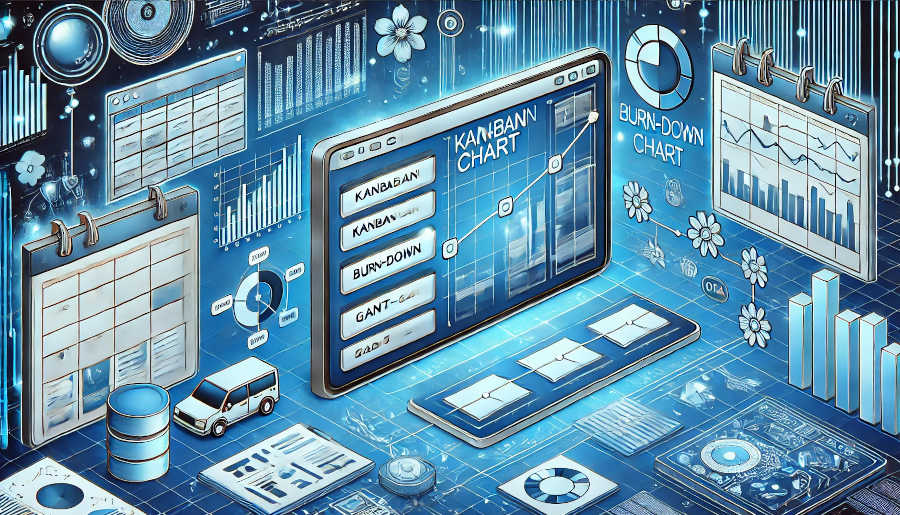Project management is a complex discipline that involves coordinating various aspects such as tasks, timelines, resources, and stakeholders. Among these elements, resource allocation stands out as a critical factor that can significantly impact the success of a project. Optimizing resource allocation ensures that the right resources are available at the right time and in the right place, minimizing waste and maximizing efficiency. One powerful tool that aids in this optimization process is the project milestone plan. A well-defined milestone plan serves as a roadmap for the project, highlighting key events and deliverables. It provides a clear structure that enables project managers to allocate resources effectively, aligning them with the project's goals and timelines. By understanding how milestone plans can optimize resource allocation, project managers can enhance project performance, reduce costs, and increase the likelihood of project success.
Understanding Project Milestone Plans
A project milestone plan is a visual or written representation of the significant events and achievements within a project. These milestones act as markers that divide the project into distinct phases, making it easier to track progress and manage expectations. Milestones are not tasks in themselves but rather the end results of a set of tasks. For example, in a software development project, a milestone could be the completion of the design phase, the release of a beta version, or the final product launch. Each milestone has a specific deadline, which helps in setting clear goals for the project team.
Milestone plans are crucial for several reasons. Firstly, they provide a high-level overview of the project, allowing stakeholders to understand the project's progress at a glance. This transparency helps in building trust and confidence among team members, clients, and other interested parties. Secondly, milestone plans serve as a communication tool. They enable project managers to convey the project's direction and expectations to the team, ensuring that everyone is on the same page. By having a shared understanding of the milestones, team members can better coordinate their efforts and work towards common goals.
Moreover, milestone plans help in risk management. By identifying key milestones and their associated deadlines, project managers can anticipate potential risks and take proactive measures to mitigate them. For instance, if a particular milestone is dependent on the delivery of a critical component from an external vendor, the project manager can closely monitor the vendor's progress and have contingency plans in place in case of delays. This proactive approach to risk management can prevent project setbacks and keep the project on track.
The Role of Milestone Plans in Resource Allocation
Milestone plans play a vital role in optimizing resource allocation. They provide a framework for determining when and how resources should be allocated throughout the project. By mapping out the project's key events and deliverables, project managers can identify the resource requirements at each stage. For example, during the initial planning phase of a construction project, a milestone might be the completion of the architectural design. To achieve this milestone, resources such as architects, designers, and drafting equipment are required. The milestone plan helps in estimating the quantity and duration of these resources needed.
One of the key benefits of using milestone plans for resource allocation is that it allows for better resource leveling. Resource leveling involves distributing resources evenly over time to avoid overloading or underutilizing them. With a milestone plan, project managers can analyze the resource demands at each milestone and adjust the allocation accordingly. For instance, if a particular milestone requires a large number of developers, but the following milestone has fewer requirements, the project manager can reallocate some of the developers to other tasks or projects during the lull period. This ensures that resources are used efficiently and that the project team is not overworked or idle.
Milestone plans also help in prioritizing resource allocation. By identifying the critical milestones that have a significant impact on the project's success, project managers can allocate resources to these areas first. For example, in a marketing campaign project, the launch of a new product might be a critical milestone. To ensure a successful launch, resources such as marketing strategists, designers, and media buyers should be allocated to this milestone. By focusing resources on critical milestones, project managers can increase the likelihood of achieving the project's objectives and delivering value to the stakeholders.
Aligning Resources with Milestones

To effectively optimize resource allocation using milestone plans, it is essential to align resources with the milestones. This involves several steps. Firstly, project managers need to conduct a detailed resource analysis. They should identify the types of resources required for each milestone, including human resources, equipment, materials, and budget. For example, in a research project, resources might include researchers, laboratory equipment, research materials, and funding for data collection and analysis.
Once the resource requirements are identified, project managers need to assign resources to the milestones. This requires considering the skills and availability of the resources. For example, if a milestone requires a specific technical skill, the project manager should assign a team member with that skill to the task. Additionally, project managers need to ensure that the resources are available when needed. This might involve coordinating with different departments or external vendors to secure the necessary resources in a timely manner.
Communication is also crucial in aligning resources with milestones. Project managers need to communicate the resource allocation plan to the team members and stakeholders. This ensures that everyone understands their roles and responsibilities and the expectations regarding resource utilization. By keeping the team informed, project managers can foster a sense of ownership and accountability, which can lead to better resource management and project performance.
Monitoring and Adjusting Resource Allocation
Resource allocation is not a one-time activity but rather an ongoing process. Once the resources are allocated based on the milestone plan, it is important to monitor their utilization and make adjustments as needed. Monitoring resource allocation involves tracking the actual use of resources against the planned allocation. This can be done through regular progress reports, status meetings, and performance metrics. For example, if a milestone is behind schedule and requires additional resources to catch up, the project manager can analyze the situation and determine the best course of action.
Based on the monitoring results, project managers may need to adjust the resource allocation. This could involve reallocating resources from non-critical tasks to critical ones, extending the duration of resource utilization, or acquiring additional resources. For example, if a software development milestone is delayed due to a shortage of developers, the project manager might reassign developers from other projects or hire temporary contractors to ensure the milestone is met.
Flexibility is key in monitoring and adjusting resource allocation. Project managers need to be prepared to adapt to changing circumstances and make quick decisions to keep the project on track. By regularly reviewing and adjusting the resource allocation, project managers can optimize the use of resources and increase the chances of project success.
Conclusion
In conclusion, project milestone plans are invaluable tools for optimizing resource allocation. They provide a clear roadmap for the project, enabling project managers to identify resource requirements, level resources, and prioritize allocation. By aligning resources with milestones, project managers can ensure that the right resources are available at the right time and in the right place. Monitoring and adjusting resource allocation based on the milestone plan helps in adapting to changing circumstances and ensuring project success.
Effective resource allocation is essential for project performance, cost control, and stakeholder satisfaction. Project managers who understand the role of milestone plans in resource allocation can make informed decisions, optimize resource utilization, and deliver projects on time and within budget. As projects become more complex and competitive, the use of milestone plans to optimize resource allocation will continue to be a critical aspect of project management. By leveraging the power of milestone plans, project managers can enhance their ability to manage resources effectively and drive project success in today's dynamic business environment.
ARTICLE TITLE :How project milestone plans optimize resource allocation ,AUTHOR :ITpmlib

















